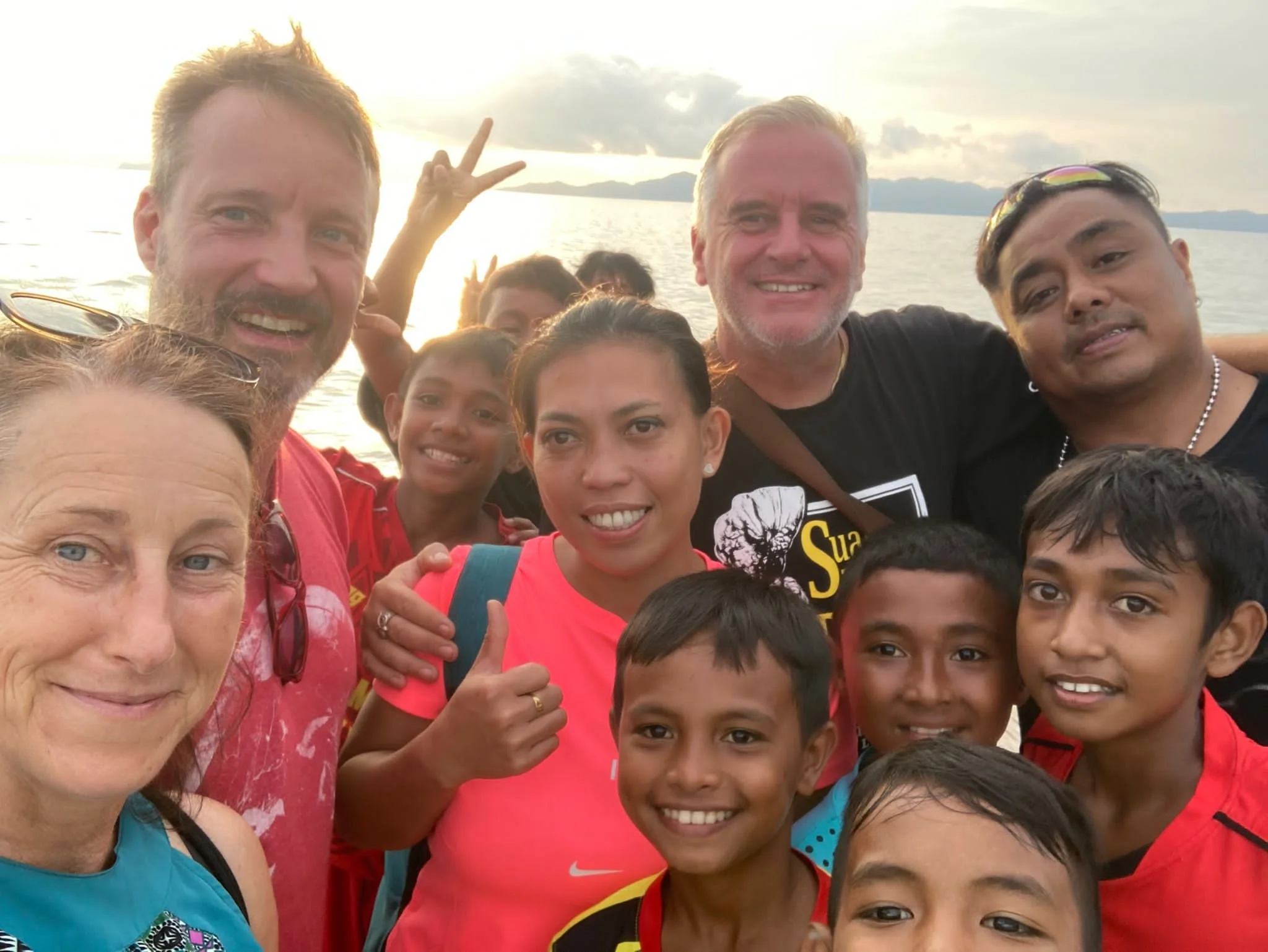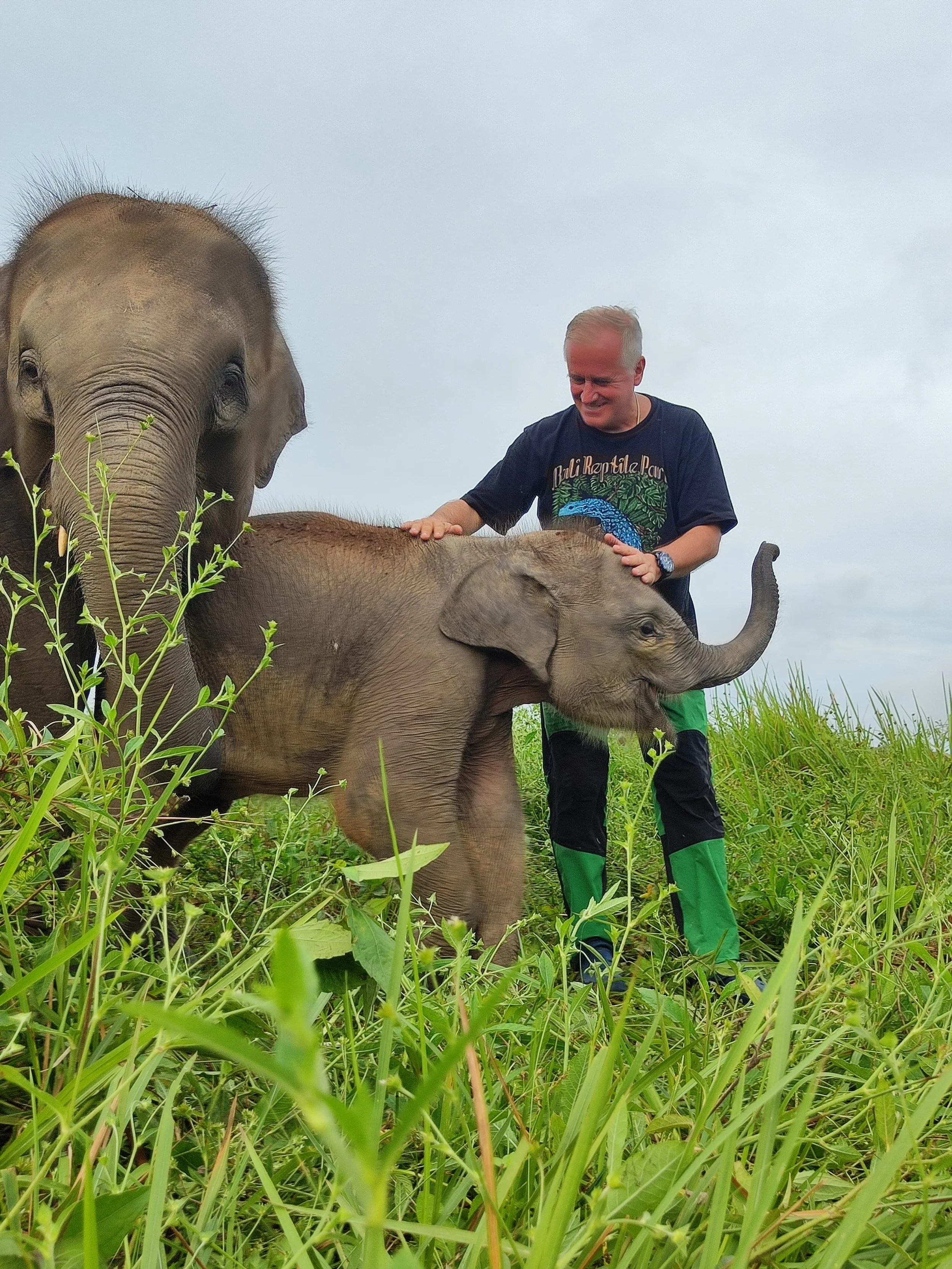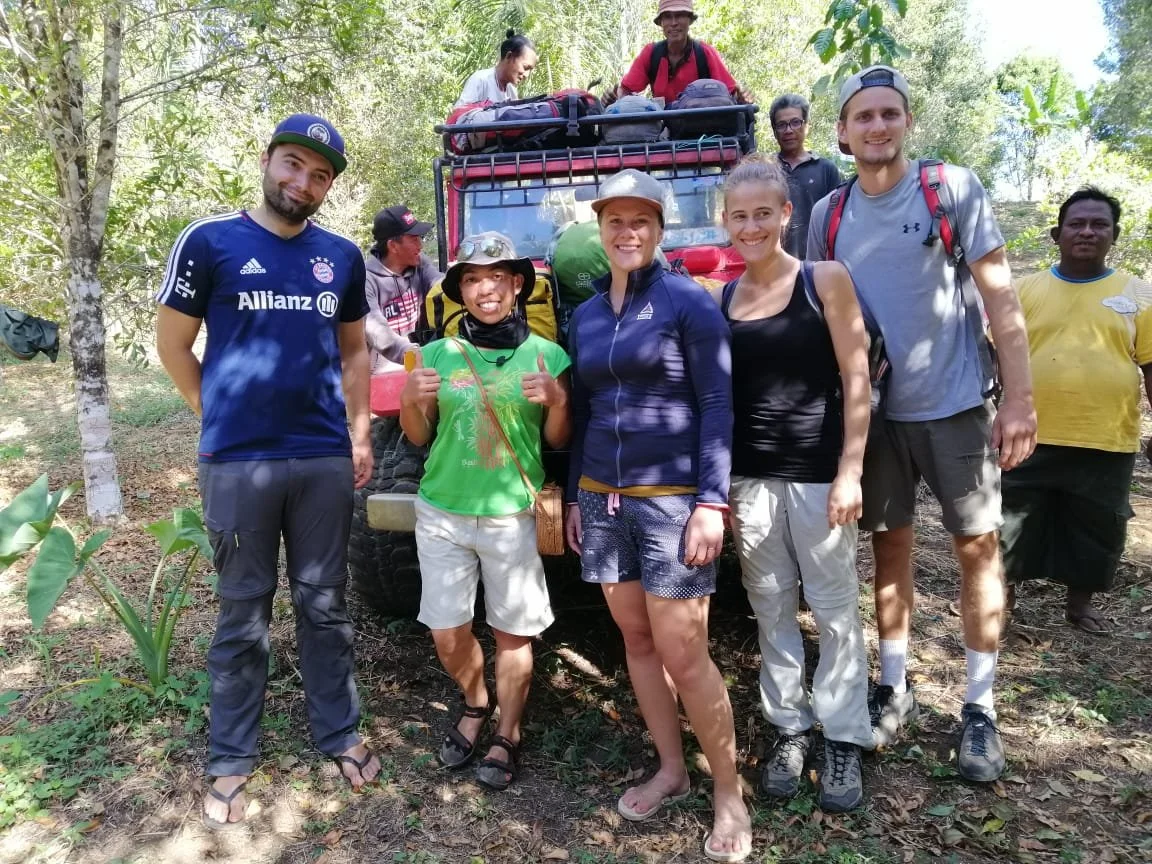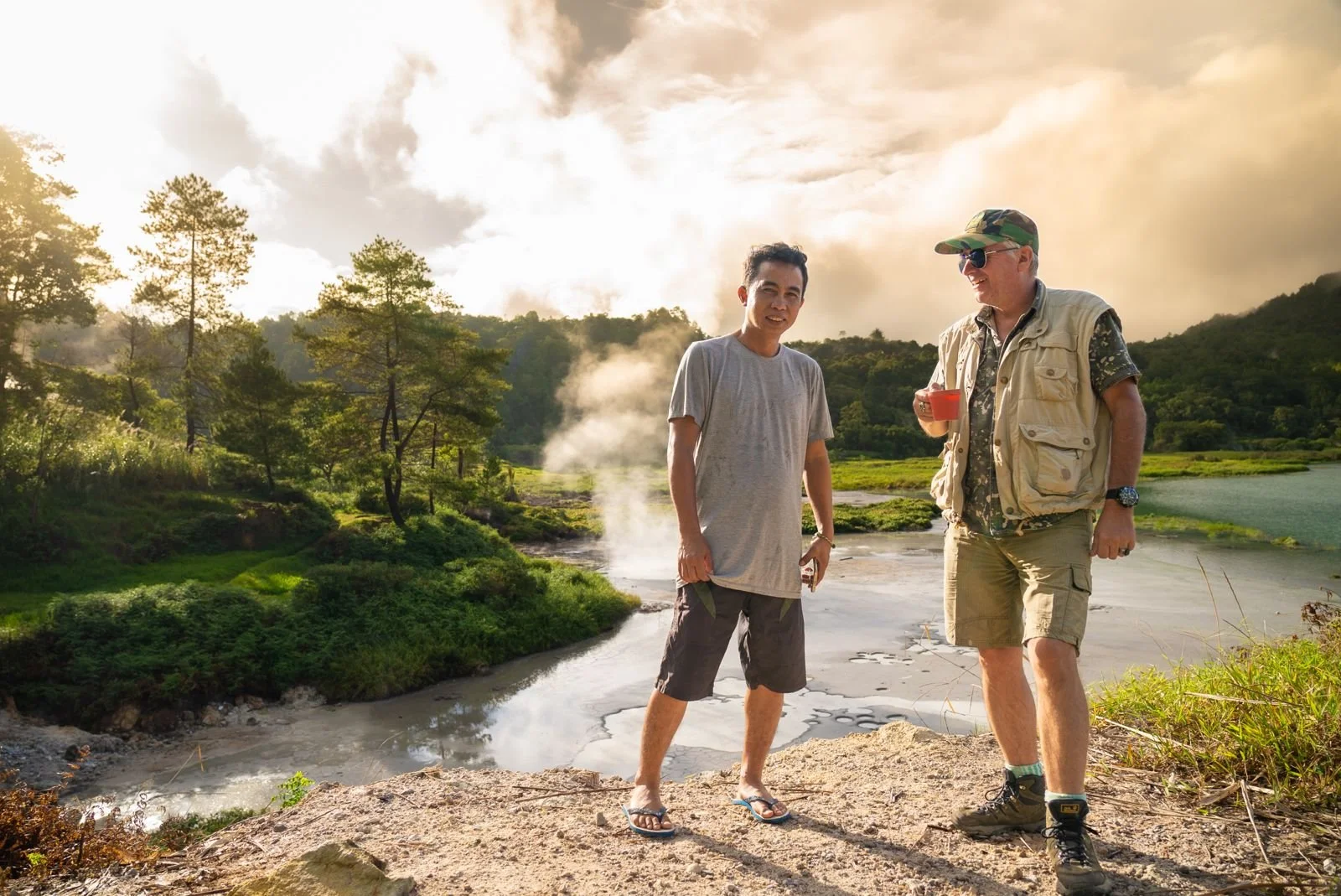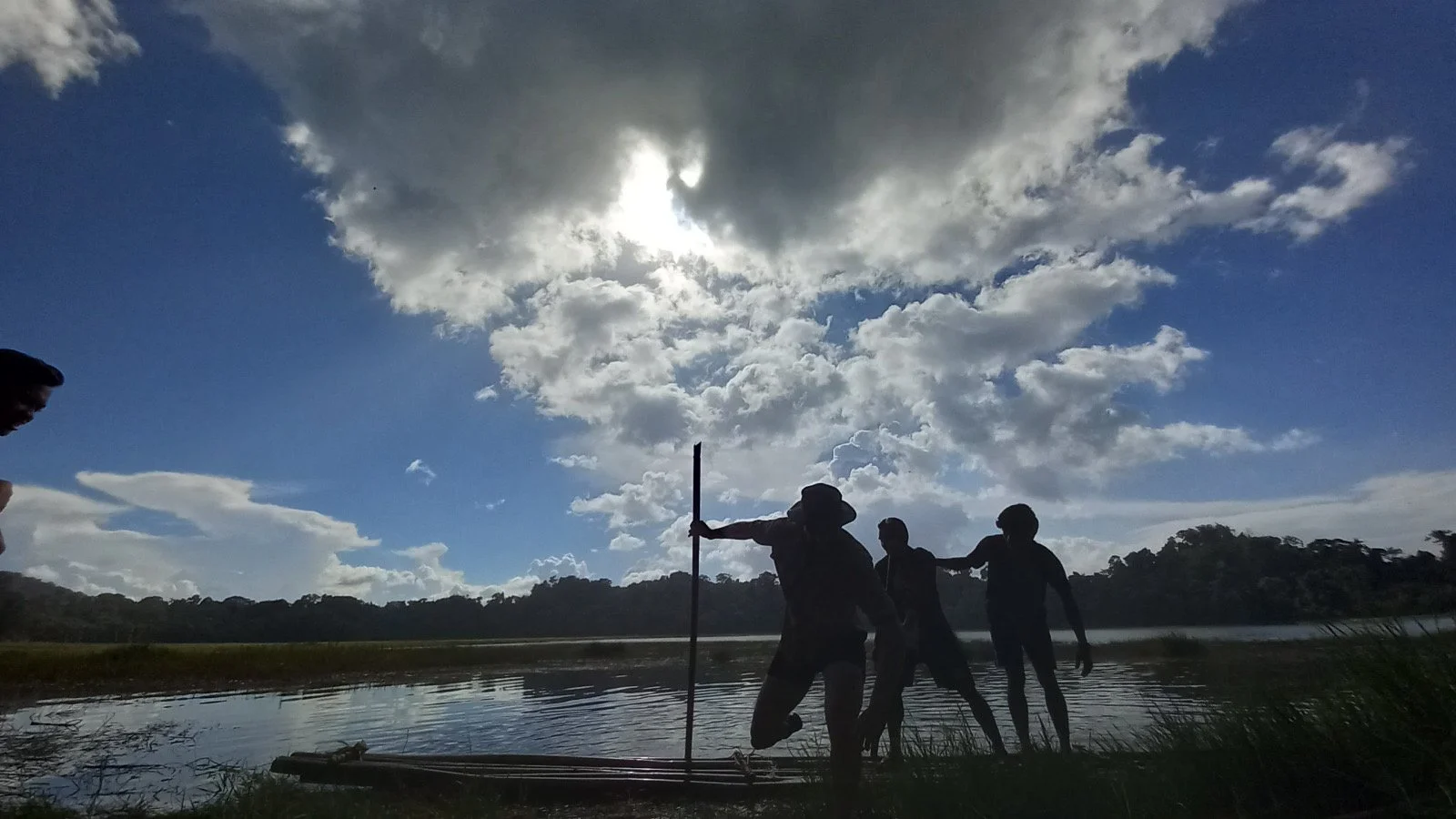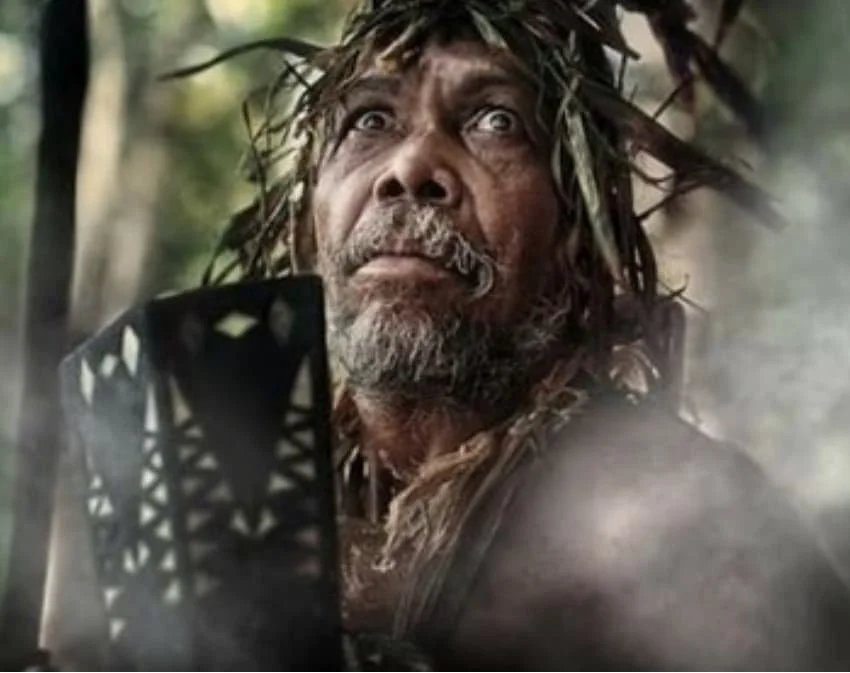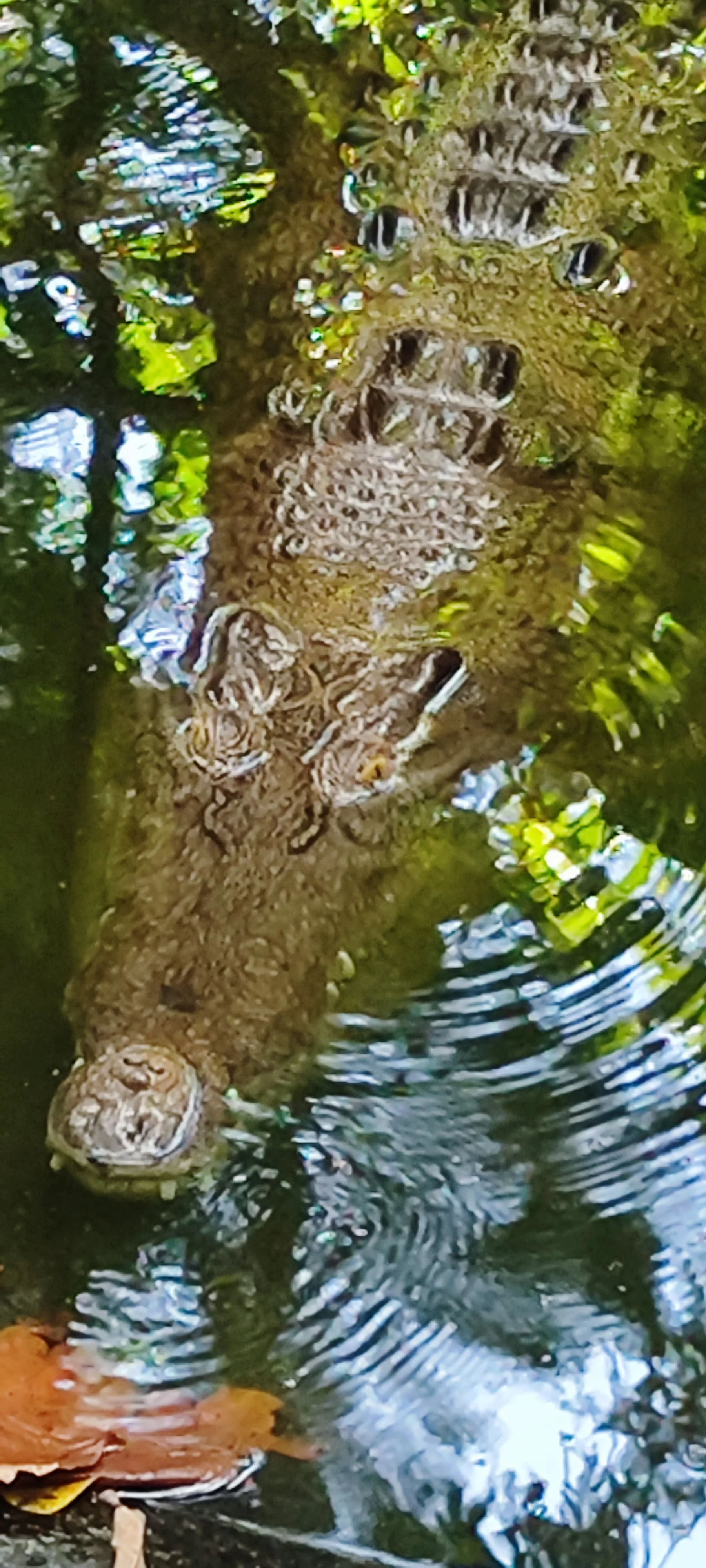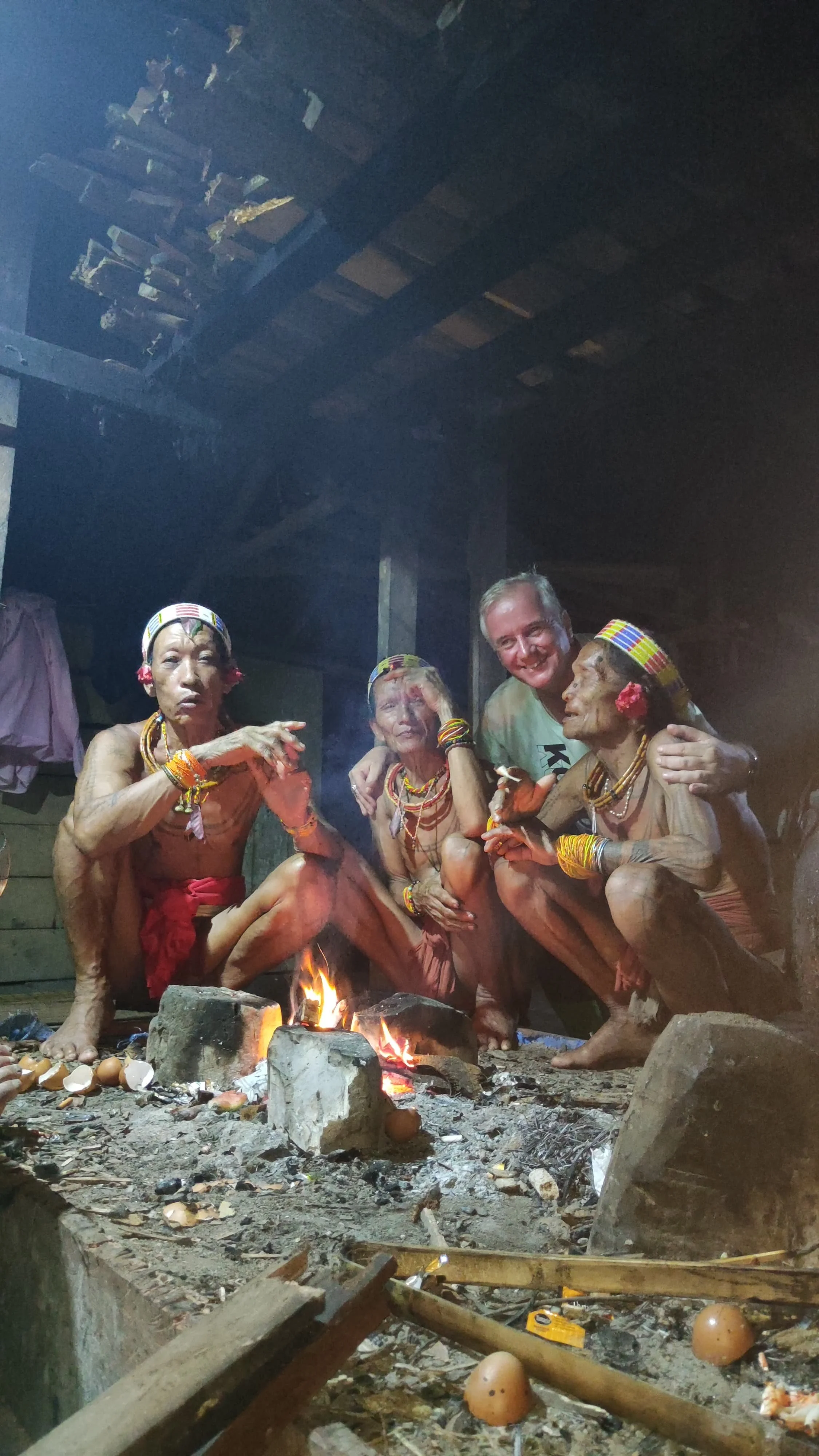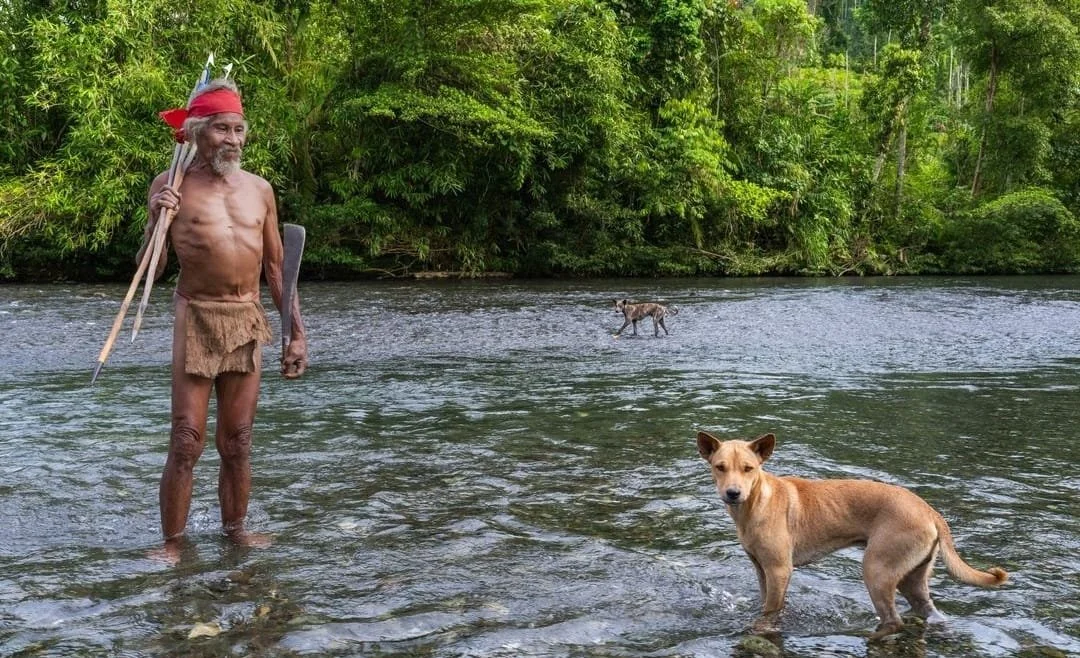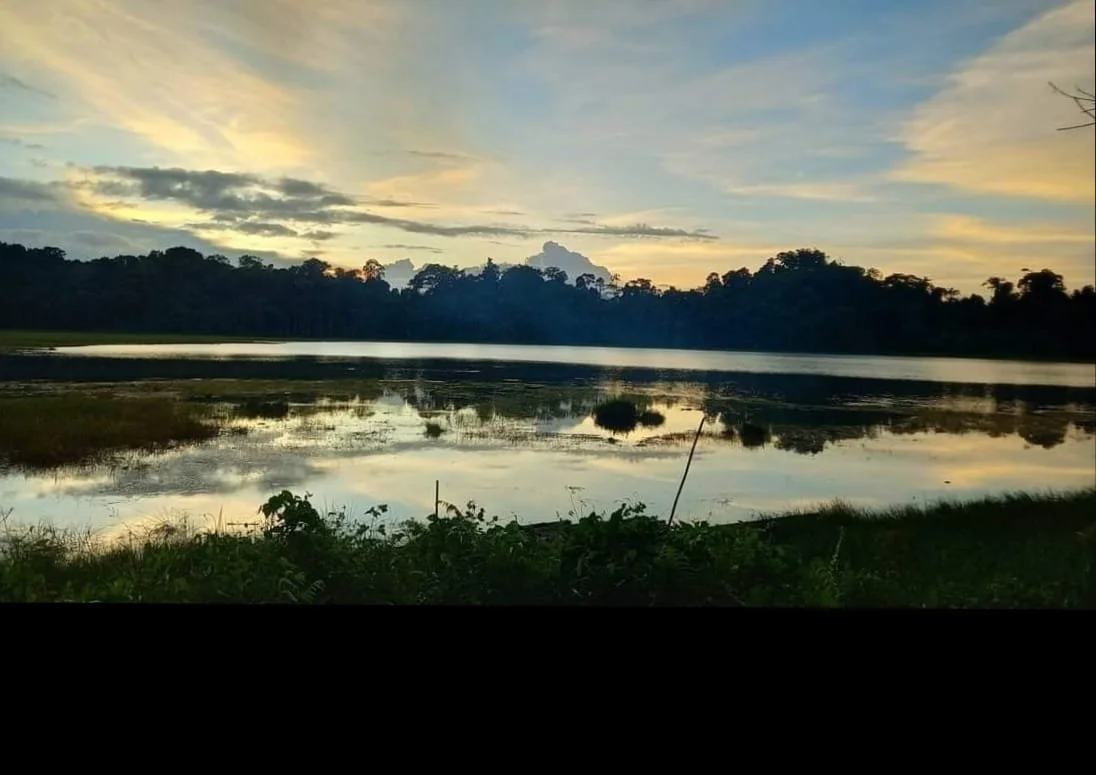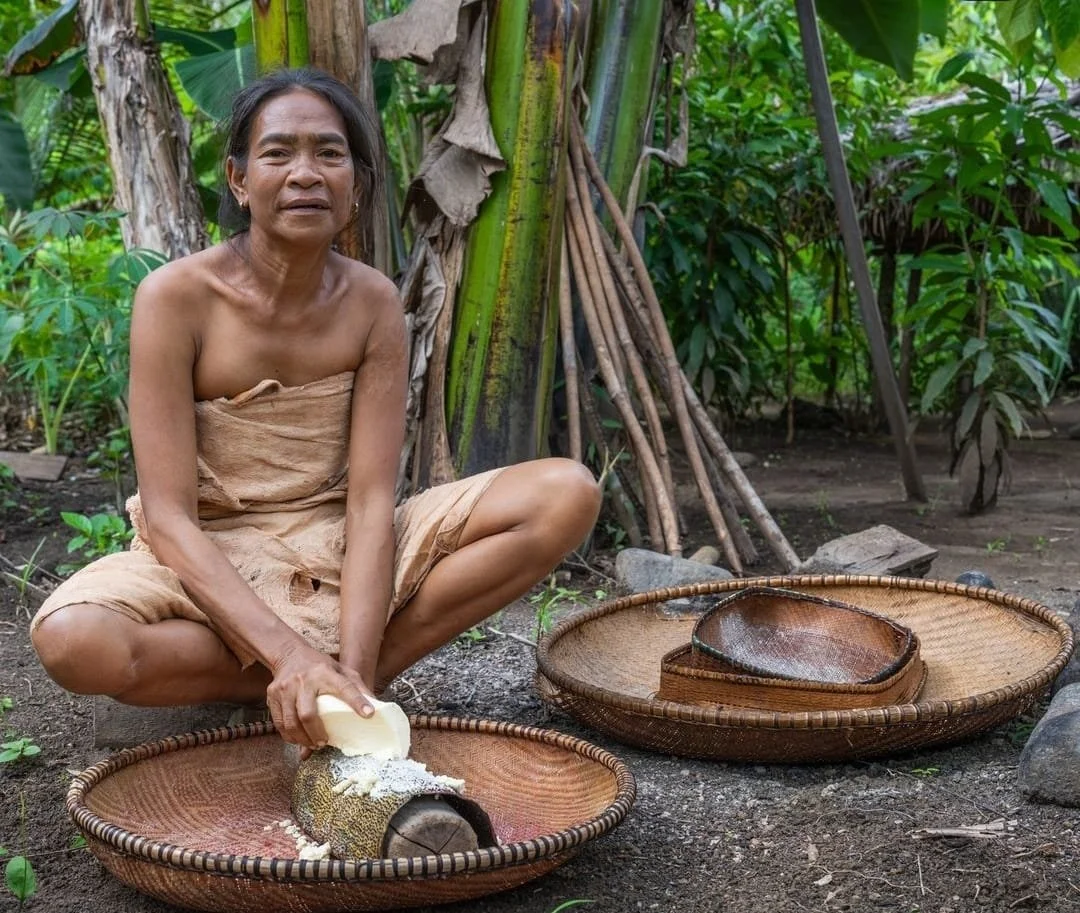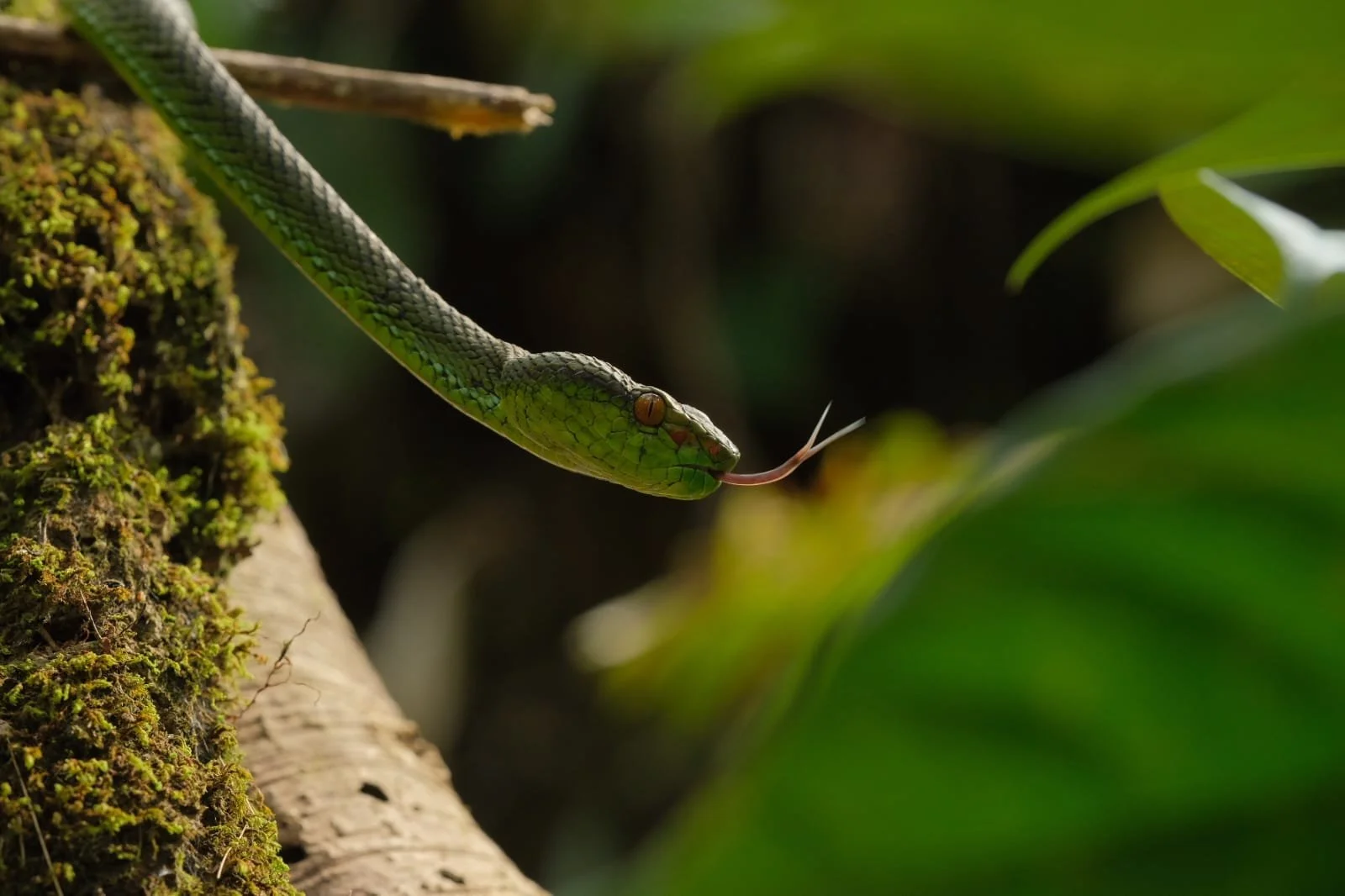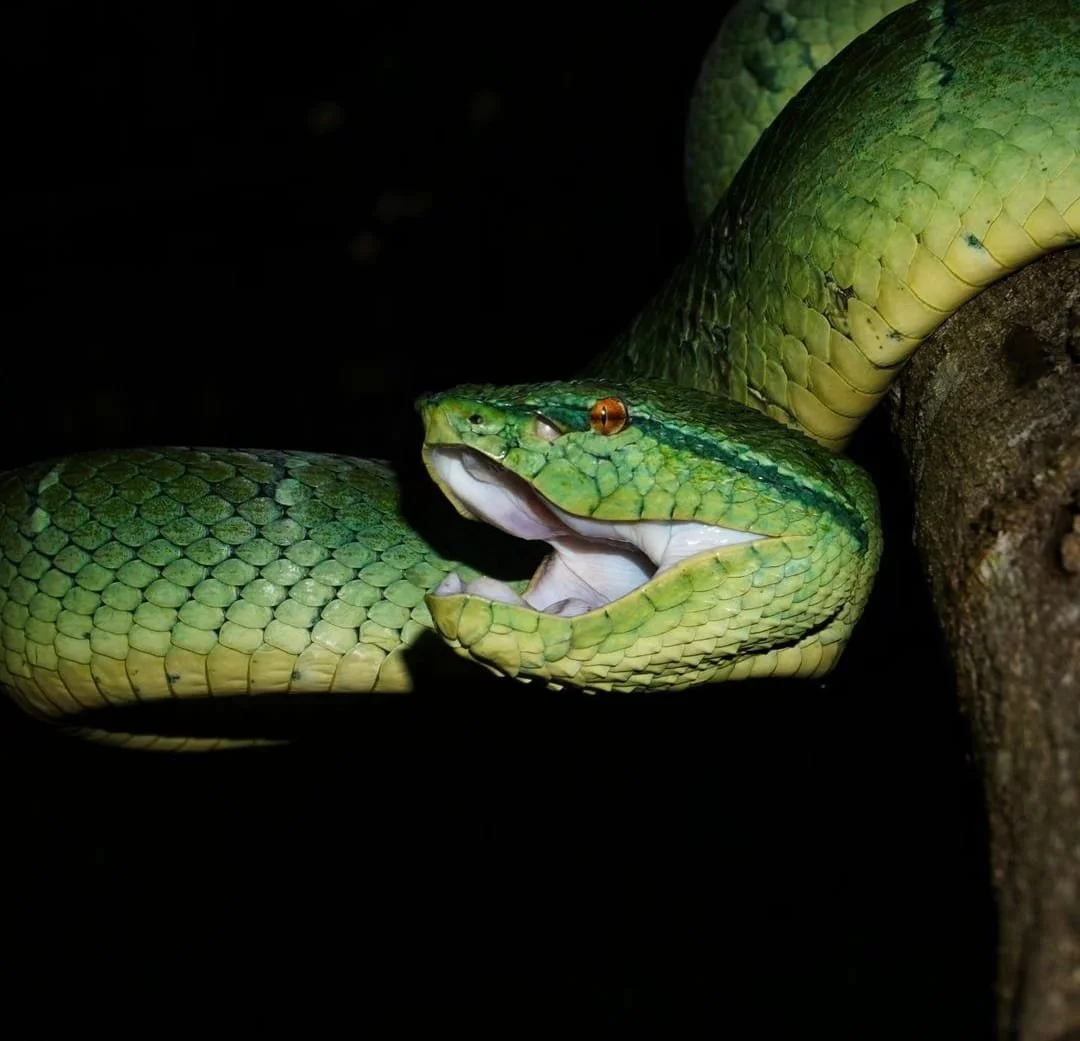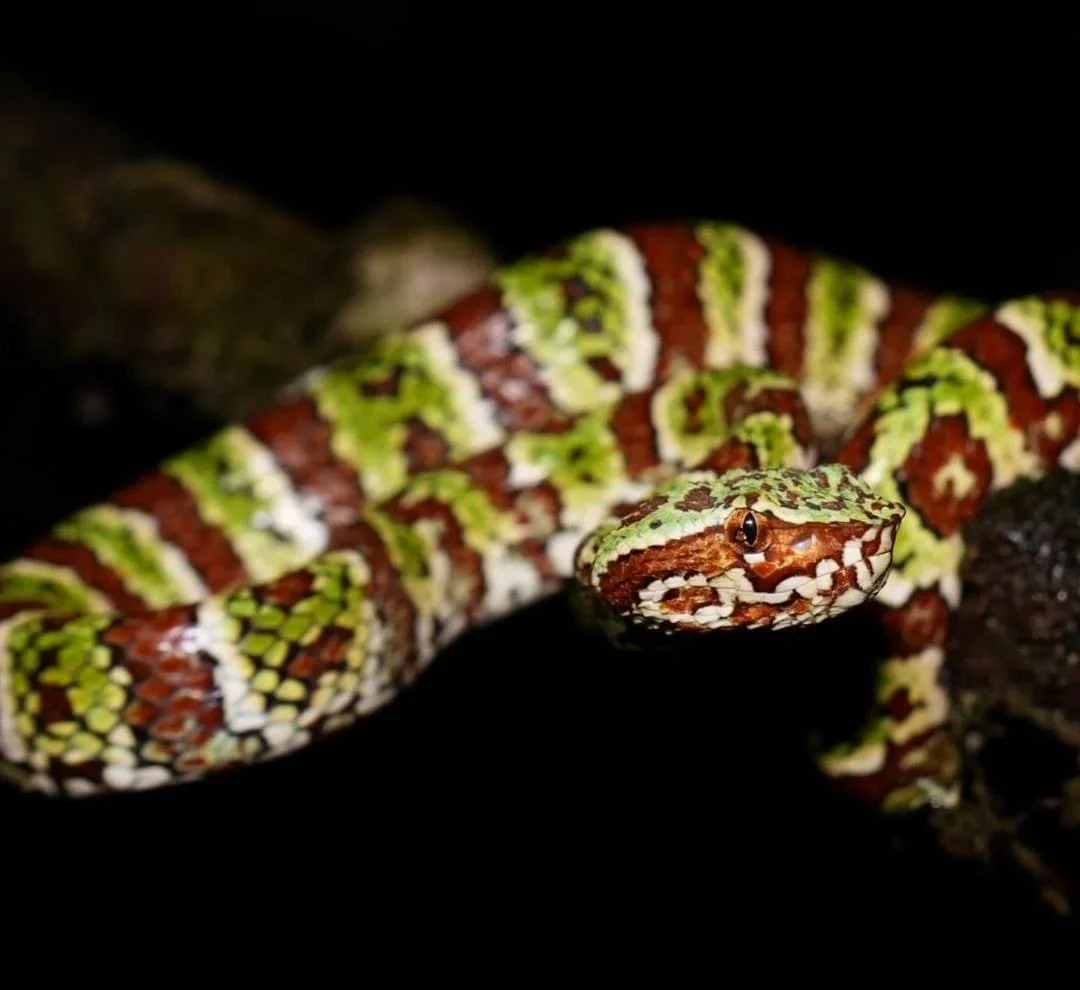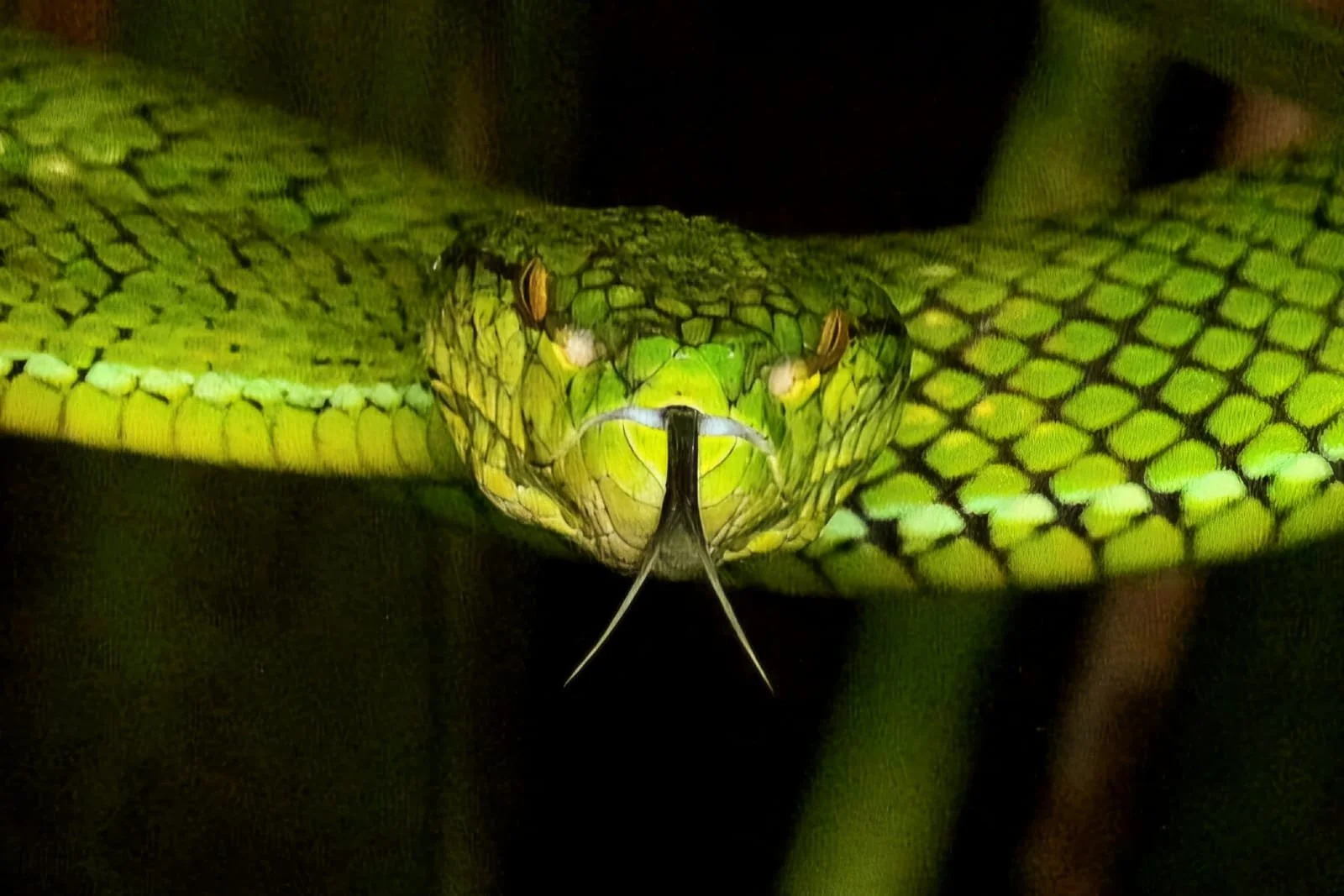Expedition of two: Mikel and Silvana
This week we sat down with Mikel Yaki and Silvana Liuw, a husband-and-wife team whose lives are deeply entwined with the rainforests of Indonesia and Southeast Asia. Mikel, originally from Germany, has been exploring tropical jungles since 1990, following a childhood obsession with reptiles and wild places. Silvana, born in the highlands of North Sulawesi, grew up climbing volcanoes, camping under the stars, and discovering her love for nature and guiding. Together, they’ve built a life shaped by adventure, community, and a deep respect for the natural world.
Image: Mikel and Silvana surrounded by friends and neighbours
The Early Spark
For Mikel, the dream began in a childhood bedroom filled with toy animals, tents, and books about distant continents. “Every weekend I was allowed to watch nature documentaries,” he recalls. “I was especially fascinated by crocodiles, snakes, and monitor lizards — animals that lived in tropical jungles. I wanted to see them in the wild.”
Later, it was his father’s book collection — volumes that combined zoology with stories about Indigenous peoples — that deepened his curiosity. “Those books taught me about the connection between animals and culture. That idea has stayed with me ever since.”
Silvana’s connection to nature began in the volcanic highlands of North Sulawesi. “As a student, I spent weekends hiking with youth groups,” she says. “We climbed volcanoes, camped out, and shared stories around the fire. That gentle relationship with nature led me toward eco-tourism and education.”
Their paths eventually crossed when Mikel was managing a resort in Silvana’s hometown. He had opened a bar, and Silvana applied to work there. “He taught me how to mix cocktails and pour wheat beer,” she laughs. “And that’s where our story began.”
Rooted in the Jungle
When asked what first drew them to the jungle — and what has kept them there for decades — Mikel and Silvana don’t hesitate. Their answer comes quickly and with a kind of reverence: the color green.
“All the shades of green,” says Mikel. “The enormous leaves, the way light filters through the canopy, the quiet dripping of rain. The jungle surrounds you completely — visually, sonically, physically. It’s overwhelming in the best way. The orchids, the insects, the hidden animals, the distant birdsong — it’s a living symphony. It still fascinates us just as much as it did at the beginning.”
But it hasn’t always been easy. Mikel’s early expeditions through the rainforests of Southeast Asia and New Guinea were marked by caution and a very real sense of vulnerability. “At first, I was afraid,” he admits. “The dangers and diseases you read about — parasites, infections, venomous animals — they make you wary. These were foreign landscapes with hidden risks. But little by little, as I listened to local guides and adapted to the rhythms of the forest, I began to feel more secure. With every step, I learned more. And eventually, the fear was replaced by something deeper: familiarity, and respect. Now, I can say I feel completely at home in the jungle.”
For Silvana, the connection is just as profound — shaped by both childhood memories and her life’s work. “The jungle teaches you to pay attention,” she says. “Every plant, every sound, every footprint has meaning. It’s not a place you can rush through, or conquer. You have to move slowly, listen carefully, and let it reveal itself to you. It’s a teacher — patient, but demanding.”
Together, they speak of the rainforest not just as a landscape, but as a world in itself — one that humbles you, sharpens your senses, and invites a lifetime of learning.
Guiding with Purpose
Running expeditions and supporting film crews as a married team comes with challenges — and strengths.
“We both have strong opinions,” Silvana admits. “Sometimes that leads to arguments. But over time, we’ve found our balance. I handle logistics and administration, and Mikel works directly with guests and crews. But we both still get out into the field.”
“Mikel is a storyteller,” she adds. “His knowledge of flora, fauna, and Indigenous cultures is incredible. And I’m the calm one — the rock in the storm.”
Mikel smiles. “She keeps me grounded.” Their approach to jungle travel is rooted in respect — for the environment and for the people who call it home.
“We always say: leave only footprints,” says Mikel. “Respect nature, and pass that respect on to the porters and guides who work with you.”
Building trust with local communities hasn’t always been easy, especially in the beginning. “They didn’t understand why we wanted to trek through the jungle,” Silvana explains. “Why take on the discomfort and danger? But through conversation and shared experiences, that changed. Now, friendships have grown. Some of our guests still stay in touch with the porters through WhatsApp — using Google Translate to keep the bond alive.”
Silvana has taken these values and woven them into the design of their trips. She involves local communities in planning and execution, uses eco-friendly accommodation, offers conservation workshops, and even builds wildlife observation hides that generate income for locals. “When done right, tourism can benefit both the environment and the people who live in it,” she says.
Silvana while on expedition with a group
Survival, Storytelling, and Life Behind the Lens
Mikel’s approach to survival in the jungle has evolved over decades — shaped not just by knowledge, but by the weight of his own backpack. “I used to carry 80-liter packs stuffed with gear I thought I needed,” he recalls. “Now, I travel light. A sharp machete is more useful than a bulky survival knife with a compass. Less is more, but only if what you bring is high-quality. In the jungle, your gear isn’t optional — it’s your lifeline.”
While Mikel focuses on mobility and field efficiency, Silvana brings another essential skill to their expeditions: nourishment. Her jungle cooking is not just sustenance, but ceremony. “I like to cook in bamboo tubes over an open fire,” she explains. “It gives the food a rich, earthy flavor you can’t replicate with a stove. We use fresh, local ingredients like fern shoots, banana blossoms, and bamboo shoots. Sharing a meal in the jungle — especially one cooked this way — becomes a moment of connection. It brings everyone together, no matter where they come from.”
Asked about the most unforgettable moments from their time in the field, both respond without hesitation. For Mikel, it was a single encounter that marked a turning point in his life: “Meeting an Indigenous group in New Guinea who had never seen a white person before. The look on their faces — and probably mine — it was one of awe, fear, and deep curiosity. That moment stayed with me.”
Silvana’s most memorable moment came on a much smaller scale, but was no less profound. “I found a new species of jumping spider on the Moluccas,” she says with a quiet smile. “Small, yes — but unforgettable. It reminded me how much we still don’t know. Every corner of the forest holds new stories.”
That sense of discovery and respect for the unknown also fuels their work with international film crews. As professional fixers and location experts, Mikel and Silvana help media teams navigate the logistical and environmental challenges of shooting in some of the world’s most remote jungles.
“People think it’ll be like filming in a safari lodge,” Mikel laughs. “They expect hot showers, decent Wi-Fi, and maybe a hospital just down the road. They’re shocked when they realize how remote — and raw — it actually is.”
Behind every successful shoot is months of preparation. Permitting alone can take two to four months, and filming in national parks or marine areas requires additional clearances. “The more precise and thorough the synopsis, the better the odds,” explains Silvana. “We handle everything: applications, scouting, location assessments, even pre-filming test runs if needed.”
But for them, the real reward is far simpler: “It’s the moment when the cameras are packed up, the crew is safe, and they’ve captured what they came for,” Mikel says. “We breathe easier when everyone’s back — tired, muddy, but smiling. That’s when we know it was worth it.”
Mikel and IAJG Certified Jungle Guide, Litser Roy Pusung
A Life Well Lived
When asked what they love most about this life, their answer is immediate. “Living close to the forest. Trekking on Sundays. Guiding guests, meeting new people. It all brings us joy,” says Silvana. “And film work is a different kind of challenge,” adds Mikel. “It’s demanding — but rewarding.”
They’ve had plenty of feedback over the years, but a few words stand out. “One guest said, ‘This expedition gave me a new perspective on life.’ Another said, ‘You made the impossible possible.’ And one phrase I’ll never forget: ‘Survival begins in the mind.’”
Their advice for the next generation of jungle guides? “Be curious about nature. Love working with people. Never stop learning. And always seek advice from experienced guides.” Their website offers a glimpse into their work — but the heart of their story lives in the jungle. As Mikel says with a smile, “If you want to know what I mean by ‘If you want to go north, start by heading south’ — you’ll have to join us by the campfire.”
We thought it best to end this article with some of the incredible imagery Mikel and Silvana provided from their amazing part of the world, showcasing their country, indigenous peoples, and incredible herpetology photography - enjoy!


